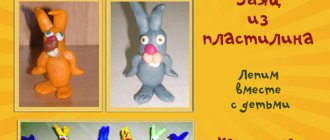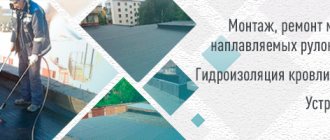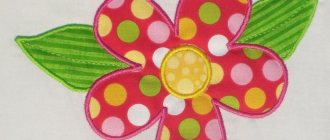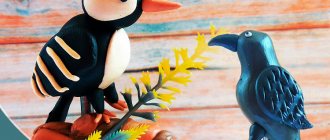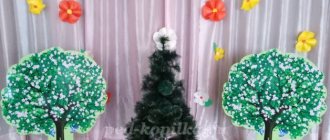Summary of the modeling lesson “Magic Forest”
"Magical forest"
Summary of a lesson on modeling from plasticine and natural materials using the method of didactic fairy tales for children of senior preschool age.
Target
: create positive motivation for learning activities, evoke an emotional response in children, arouse interest in natural materials, develop imagination, and shape children’s cognitive activity.
Tasks
: to consolidate the skills of constructive modeling, to teach ways to connect various materials, to consolidate children’s ability to reflect the characteristic features of animals, to develop constructive abilities, logical thinking, and imagination.
Materials and tools
: natural materials (cones, acorns, maple seeds (helicopters), twigs), plasticine, stacks, modeling boards, assistant toy “Lesovichok”, visual materials with images of forest animals and birds (pictures).
Lesson plan
:
1. Listening to a didactic fairy tale, stimulating children to do activities.
2.Acquaintance with images of animals living in the forest.
3. Consideration of natural material, selection of suitable material for creating an animal figurine.
4.Preparation for activities. Finger gymnastics.
5. Visual activity. Modeling.
6. Cleaning your workplace.
7. Reflection. Exhibition of works.
Progress of the lesson
.
1. The teacher tells a fairy tale on behalf of Lesovichka. Children actively participate and answer Lesovich’s questions.
A tale of a magical forest.
-Hello guys! Do you recognize me? I am Lesovichok. Why do you think they call me that?
- Because you live in the forest.
-Guys, listen to the story that happened in my forest. Do you know what animals and birds live in the forest?
Children name animals and birds living in the forest.
-Well done boys! So in my forest there lived different animals and birds. It was an unusual forest, it was magical. All the animals in it lived very amicably, never quarreled, played together, went to visit, and no one hunted anyone. But then one day an evil wizard appeared in our forest and demanded that all the animals begin to live like ordinary forest animals, to hunt each other. The animals did not want to listen to the wizard. After all, the most important and dear thing to them was friendship. The wizard got angry and turned all the inhabitants of the forest into cones and acorns. I tried to save my friends, ran to the good fairy, and told her about the misfortune. But she couldn't do anything. No matter how much she waved her magic wand, nothing worked for her: cones remained cones, and acorns remained acorns... And then I went to the wise Owl, she lived in the world for a very long time and knew everything. “Owl, you are so smart, wise, you live so long. Tell me, how to save the animals, how to return them to their former appearance?” And the Owl replies: “Only a rescue team can save animals.” “Where are these rescuers and what can they do if even the good fairy couldn’t save the animals?” I say. “And the rescuers are children. They have very skillful hands and a rich imagination. They will return the animals to their former appearance.” That's how I came to you guys. Let's return the animals to the forest! (Children express a desire to help Lesovich).
2. Teacher:
-In order to help Lesovichk return the animals to the forest, we need to be properly prepared. Let's carefully look at the pictures of animals, see what color they are, what size they are, what kind of body, head, paws, tail, ears, etc. they have.
Demonstration of visual material with images of forest animals and birds.
3.Teacher:
-Now let's look at the cones and acorns and try to guess what animal is hidden in them?
Children choose pine cones, acorns, examine them, choose an animal or bird to make.
4.Teacher:
– Our hands and fingers have a very important job ahead of them, they need to be properly prepared.
Finger gymnastics
"Bunnies"
Once upon a time there were bunnies on the edge of the forest (3 fingers in a fist, index and middle fingers - ears),
Once upon a time there lived bunnies in a little white hut (they fold their arms like a house).
We washed our ears, we washed our paws (rubbing our ears, washing our hands),
The bunnies dressed up and put on slippers (Movements of the palms from top to bottom along the body show how to put on slippers).
"Hedgehog".
The little hedgehog froze and curled up into a ball. The sun warmed the hedgehog - the hedgehog turned around! (Pressed your fingers - the hedgehog removed the needles, straightened your fingers - the hedgehog showed the spines).
5. Children themselves choose the appropriate color of plasticine. The body of the craft is the selected pine cones. Children sculpt the head, paws, and tail of a chosen forest animal. Acorns can also be used (head). Twigs (legs) can also be used. If you are making a bird, maple seeds can be used as wings. “Ball and sausage” skating skills are practiced and constructive skills are practiced.
6. Cleaning your workplace. Children put unused materials and tools back into place.
7. Reflection. Summarizing.
Children display their work on the table.
Lesovichok:
- What great fellows! You are real rescuers! You helped the animals return to their magical forest! Let's come up with an ending to the fairy tale.
Children come up with the ending of the fairy tale:
-All the animals returned to the forest. Everyone again began to live amicably and cheerfully.
Teacher:
- Guys, what did you like most about the lesson? What have you learned? Let's say goodbye to Lesovichok and wish all the animals to always remain friendly.
Preparatory group modeling on the theme of autumn
oak branch with acorns (plasticine)
What you need for sculpting:
- plasticine (gray-blue, beige, light brown, light green, white);
- flexible board for modeling;
- thick cardboard;
- template “Oak branch with acorns”;
- pencils, felt-tip pens for drawing panel details;
- a set of stacks and spatulas for plasticine.
Sequence of work:
Let's draw the contours of an oak branch on a sheet of thick cardboard (white or light blue). To simplify the work, we use a ready-made template of an oak branch with acorns.
Let's soften the pieces of gray-blue plasticine, spread them in a thin layer on the cardboard - we will create the background of the picture. To make the material more pliable, warm it up a little in lukewarm water. We will “paint” the upper third of the sheet with a more saturated tone, and the lower third with a lighter tone. We roll 3-4 small cylinders from white plasticine, flatten and stretch them on cardboard, cut them into a stack, giving them the shape of clouds.
Sequentially fill the contours of the branches, leaves, and acorns with brown and gray-green plasticine. It’s convenient to “draw” with pre-prepared small balls of plasticine of different colors. The layer of material should be sufficient for a volumetric effect, but not too dense. To obtain the required shades, plasticine can be mixed while kneading.
Let's correct the contours of the drawing with a spatula and a stack. Let's draw or make leaf veins from thin plasticine flagella. Let's do some shading on the caps of the acorns and the bark of the oak branch.
plasticine painting “Autumn mood”
What set to prepare for creativity:
- a set of plasticine (gray, dark orange, blue, yellow, red, etc.);
- modeling board;
- cardboard sheet for the base;
- drawing template;
- pencil;
- set of stacks, spatulas.
How to “draw” with plasticine:
Let's draw the outlines of the picture onto the cardboard. We use a ready-made template. If a suitable drawing is not available online, you can create a similar one from individual parts: a girl under an umbrella, a dog, etc.
Let's decorate the background of the picture - smear slightly warmed gray plasticine on the cardboard, in some areas we will use dark orange plasticine to mark sections of the brick wall. Using a stack (deep pressing) we draw clear outlines of the bricks. For plasticineography, it is better to choose hardening or wax plasticine.
At the bottom of the sheet we attach small cakes of dark gray plasticine, flatten them, smear them a little along the edges, and draw the contours of the paving stones. Using pale blue plasticine (if this is not in the set, mix blue and white) we will depict puddles. To simulate water with a thin stack, draw concentric circles on them.
Let's sequentially fill all the elements of the drawing with plasticine of the required shades - the girl's face, hair, arms, legs, cloak, boots. Let’s “color” the dog and the umbrella with plasticine. Let’s “depict” raindrops. For work, it is convenient to use pre-prepared small balls of plasticine of suitable colors. Before filling in the contours of the picture, it is better to warm them slightly in warm water.
We outline the contours of the finished drawing with a stack. We will remove excess plasticine and correct the details. Leave the picture for a day until the plasticine hardens.
Autumn painting made of plasticine
Let's start with the most difficult, and at the same time, the most exciting task - sculpting an autumn landscape. To do this you need to prepare in advance:
- a thick sheet of cardboard, preferably blue, which in the picture will depict a blue autumn sky and the same blue autumn distances;
- plasticine of various colors;
- stack (this, if anyone doesn’t know, is a special knife for cutting plasticine, which is usually sold along with a package of plasticine);
- a smooth board without roughness or burrs for rolling out plasticine;
- paints and brush (optional).
Let's start creating.
- From plasticine of all autumn colors (yellow, brown, red) we roll out sticks of different thicknesses and lengths.
- Having prepared plasticine sticks, we begin to make autumn leaves from them. Of course, fashioning a piece of wood from plasticine is a difficult task, but in this case it is not necessary. We make spirals from plasticine sticks (aka “snails”). To do this, the stick needs to be rolled into a spiral - a task that any child can easily cope with.
- Having made a sufficient number of spirals, we begin to stick them to the cardboard, forming the crown of the tree. What exactly the crown should look like in terms of size, contours and color palette depends entirely on the child’s imagination.
- Having finished with the crown, we begin to make the trunk and branches of the tree. We roll out sticks of different lengths and thicknesses from black or brown plasticine. These are fragments of tree trunks.
- By the way, about the color scheme. It is not at all necessary that the trunk be exclusively black or brown. Maybe the child is an impressionist or abstract artist at heart, and sees the autumn forest in his own way - in some other colors. Well, so much the better, and there is no need to convince him of anything.
- We begin to form a tree trunk from the bundles. Of course, it should be below, under the crown. We stick several flagella to this place from top to bottom. We try to keep them parallel to each other. Several flagella under the crown are already a full-fledged trunk.
- We make many more flagella of different colors. Roll them into spirals. These are fallen autumn leaves. We place them below under the tree.
- In this way you can sculpt one tree. Or maybe several at once. You will get a full-fledged plasticine grove.
- We make a circle and thin sticks from yellow plasticine. This is the autumn sun and rays. We stick them on top of the picture.
- If you have the desire and ability, we paint the space between the trees or around the tree in autumn colors. It will turn out great - both plasticine and paint.
- Finally, we prepare a frame for the picture (what is a picture without a frame?). To do this, we make long plasticine strips of any color and paste the picture along the contour. You can do this using simple plasticine strips, or you can weave several strips in the shape of a braid - it will be even more beautiful.
The result will definitely be a highly artistic product - a real autumn plasticine landscape. For example, like the one in these photos.
This video will tell you how best to make a picture from plasticine.
This video will teach you how to sculpt a beautiful autumn tree from plasticine.
Each tree consists of fragments: trunk, crown, individual branches, berries and leaves. They also need to be able to sculpt beautifully. How to do this better, look at another video.

